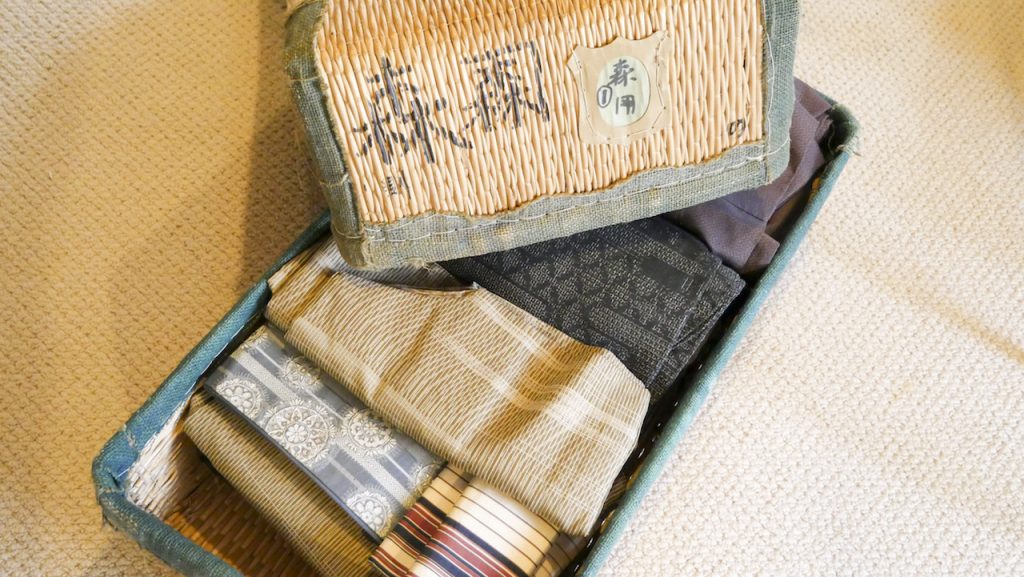
Gil Asakawa
Like a lot of people, when Kim Kardashian, who is famous only because she (and everyone in her family) is a celebrity, named her new line of body-shaping underwear “Kimono,” I was appalled. I thought the headline was a joke — you know, “fake news.”
The choice of name was dumb because — duh — kimonos are a traditional Japanese outer garment and have nothing to do with underwear. But there was some logic in calling her line of undies, though I doubt she knew this when she settled on the brand name: mono means “thing,” so calling a Kim Kardashian product “Kim-mono” sorta makes sense as “Kim’s thing.”
Still, it was a stupid move, especially when she filed trademarks so nobody else could use “kimono.” I’d like to have seen her taking a Japanese shop to court for selling a kimono, when the family that owns the shop has probably been making and selling kimonos for hundreds of years.
That’s the kind of respect for cultural tradition that Kardashian clearly lacks. To be fair, Kardashian’s family on her father’s side is Armenian, so she may be more attuned to that culture, cradled next to Turkey between the Middle East and Eastern Europe, more than Japan.

Kimono and obi of Asakawa’s grandmother.
The thing is, kimono as a word, idea and garment can’t be “owned” by a Western company to represent a Western product. It has a long and distinguished history as a garment for both men and women, and depending on the fabric and pattern, for all levels of society.
The kimono first arrived from China (as many things in Japanese culture have) during the Tang Dynasty and Japan’s Heian Period (794-1192 CE). During the Edo period, when Japan was isolated from foreign influence and samurai culture and arts developed, the modern kimono, with its long sleeves and formal wide obi belts, evolved.
When I was growing up in Japan in the early 1960s, it wasn’t unusual to see women in even big cities like Tokyo wearing a kimono. Not fancy, colorful ones necessarily, but functional clothes for everyday shopping or housework in muted colors.
Today, if you see a kimono in public, it’s probably for a special occasion like a traditional wedding, or a tourist who paid to wear one for a few hours and pretends to be a geisha.
I have a yukata, a cotton summer kimono, that my wife’s grandmother gave me one year to wear during Obon dances to honor my ancestors. And when my grandmother in Hokkaido passed away, my uncle shipped me her rattan trunk of her kimono and obi. Again, they’re not fancy or colorful — she was a shopkeeper — but I treasure them.
Kimono have become such a part of the visual and cultural language of Japan that the city of Kyoto, itself one of the treasures of Japanese culture, announced this year that it’s submitting kimonos for UNESCO’s list of “intangible cultural heritage.”
Kyoto’s mayor wrote a letter to Kardashian when the Kimono line was announced, which eloquently urged her to change her mind:
Ms. Kim Kardashian West
Kimono Intimates, Inc.
“I am writing this letter to convey our thoughts on Kimono and ask you to reconsider your decision of using the name Kimono in your trademark.
“Kimono is a traditional ethnic dress fostered in our rich nature and history with our predecessors’ tireless endeavours and studies, and it is a culture that has been cherished and passed down with care in our living. Also, it is a fruit of craftsmanship and truly symbolizes sense of beauty, spirits and values of Japanese.
“In recent years, we see not only Japanese but also many foreign tourists wearing Kimono and strolling around in Kyoto and cities in Japan. It is a proof that Kimono, that we are proud of as our traditional culture, is loved by people from around the world.
“We are currently undertaking initiatives nationally to make ‘Kimono Culture,’ symbol of our culture and spirits, registered to UNESCO’s Intangible Cultural Heritage list. We think that the names for “’Kimono’ are the asset shared with all humanity who love Kimono and its culture, therefore they should not be monopolized.
“I would like you to visit Kyoto, where many Japanese cultures including Kimono have been cherished, to experience the essence of Kimono Culture and understand our thoughts and our strong wish.”
Yours Sincerely,
Daisaku Kadokawa,
Mayor of Kyoto
After a week of social media abuse and then this letter, Kardashian wisely announced that she’ll choose a different name for her underwear line.
Some people, including a couple of social media acquaintances of mine, thought this was one of those fights over “political correctness” and shrugged off the controversy with a “who cares?”
I do, and so do a lot of people, not just Japanese either. This issue wasn’t just about wringing hands over political correctness. It was about an unthinking act of cultural appropriation that would change the meaning of one of the most-revered Japanese words, one that’s known around the world for something other than.
I don’t think Kardashian is racist (Google what happened to Armenians), or even opportunistic. I didn’t imagine her wiggling her fingers together à la “The Simpsons’” Mr. Burns, plotting how she’s going to tear away the traditional kimono to show how Kim’s mono holds in a big butt.
I just think she was oblivious to any possible ripple effects and was genuinely surprised when the controversy hit the proverbial fan. In a Wall Street Journal interview, she said she had “innocent intentions” and admitted, “You would think we would have obviously thought it through a little bit deeper.”
Like I said at the beginning, “Duh.”
Gil Asakawa is a former chair of the Pacific Citizen Editorial Board and author of “Being Japanese American” (Second Edition, Stone Bridge Press, 2015). He blogs at www.nikkeiview.com.



